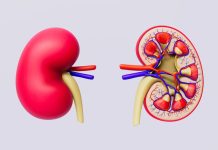
Liver disease connected to alcohol consumption is a major global health issue. The liver plays a crucial role in processing alcohol, but excessive drinking can severely damage this organ, leading to various health problems.
When you drink alcohol, your liver works to break it down, but this process produces toxic byproducts that can harm liver cells.
Over time, if drinking continues, these toxins can cause inflammation and fatty buildups in the liver. Eventually, this might lead to more severe conditions like fibrosis (scarring of liver tissue), cirrhosis, and even liver cancer.
Understanding the Stages of Alcohol-Related Liver Disease
The progression of alcohol-related liver disease (ARLD) occurs in stages, each with its own set of challenges:
Alcoholic Fatty Liver Disease (AFLD): This is the initial stage of ARLD and is quite common. It is marked by an excessive fat buildup in liver cells, hindering the liver’s ability to function efficiently.
This stage can develop even after relatively short periods of heavy drinking and is often reversible if alcohol consumption stops.
Alcoholic Hepatitis: This inflammation of the liver is caused by alcohol consumption, not by the hepatitis virus. Symptoms can vary from mild to severe and include jaundice (yellowing of the skin and eyes), abdominal pain, nausea, and vomiting. In its severe form, alcoholic hepatitis can be life-threatening.
Cirrhosis: In this advanced stage, significant scarring of the liver occurs, accompanied by a loss of liver function. Cirrhosis is often irreversible and can lead to grave complications like liver failure and the need for a liver transplant.
Recognizing the Signs and Symptoms of Alcohol-Related Liver Disease
The signs of ARLD can differ based on the disease stage and the extent of liver damage, but common symptoms include:
- Fatigue and Weakness: These can be early indicators of liver problems.
- Jaundice: This is one of the most visible signs of liver disease, characterized by a yellowish tinge to the skin and the whites of the eyes.
- Abdominal Pain and Swelling: As the disease progresses, fluid accumulation in the abdomen (ascites) and pain in the upper right side of the abdomen are common.
- Nausea and Loss of Appetite: These symptoms arise as the liver struggles to process toxins.
- Mental Confusion: Known as hepatic encephalopathy, this occurs when the liver fails to remove toxins from the blood, impacting brain function.
- Red Palms and Spider Naevi: These are signs of advanced liver disease, where the palms turn red and small, spider-like blood vessels become visible under the skin.
Prevention and Management
The best way to prevent ARLD is to consume alcohol in moderation or abstain altogether. For those already affected by liver damage due to alcohol, stopping alcohol consumption is essential to prevent further harm.
Regular medical check-ups are crucial for managing symptoms and monitoring liver health, especially for individuals who drink heavily or have other risk factors for liver disease.
Research Evidence and Outlook
Ongoing research aims to better understand the effects of alcohol on the liver and to find the most effective treatments for ARLD.
Studies have shown that stopping alcohol consumption can significantly improve health outcomes, even for those with severe forms of the disease like alcoholic hepatitis and cirrhosis. This highlights the importance of early detection and treatment.
Alcohol-related liver disease poses serious risks, but recognizing the signs early can lead to effective interventions that significantly improve health outcomes.
If you or someone you know exhibits symptoms of liver problems and has a history of alcohol use, seeking medical advice promptly is crucial.
If you care about liver health, please read studies about a diet that can treat fatty liver disease and obesity, and coffee drinkers may halve their risk of liver cancer.
For more information about liver health, please see recent studies that anti-inflammatory diet could help prevent fatty liver disease, and results showing vitamin D could help prevent non-alcoholic fatty liver disease.
Copyright © 2024 Knowridge Science Report. All rights reserved.



